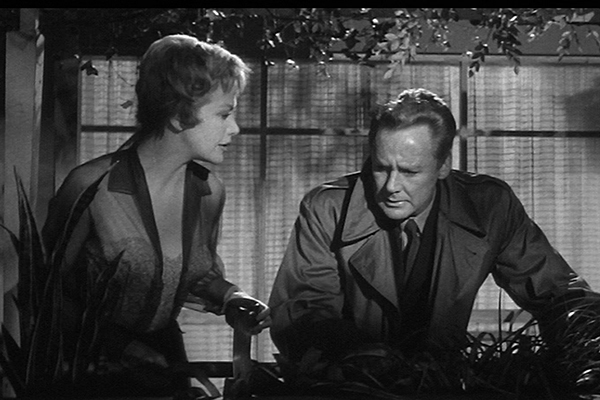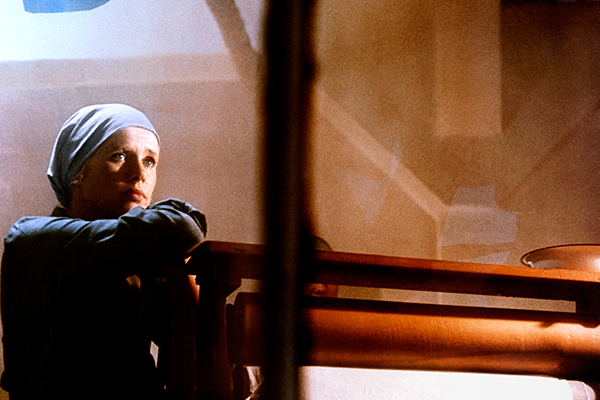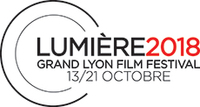Morning mâchon and an evening with Persona
#Lumière2018
by Serge Kaganski
Posted on october 16, 2018
Monday morning, I had planned to see Henri Decoin’s “Toboggan,” when I received a message from the festival, inviting me to the traditional mâchon at restaurant Georges, in the tiny Rue du Garet, at the foot of the Opera.
Such is the life of a Lumière festivalgoer, it is sometimes necessary to choose between "good films," "good food,” and “good friends" and adjust your program accordingly. I love the cinema, but from now on, I will never miss the rare opportunity to attend a mâchon. Let's remind the non-Lyonnais and the those not in-the-know that the mâchon is an invigorating breakfast that the “Canuts” (silk workers on the Croix-Rousse) would eat at 8am, after rising at 4am and having already worked up an appetite. And to feed the Canuts, you needed beefy, solid, filling food, and calories by the kilo. On the menu: rosette sausage, gratton ("lean fat" according to the mâchon chef), “head cheese,” andouillette gratin, sabodet (a hot sausage with pistachios and fat), tablier du sapeur (beef with its rind), potatoes, lentils, cervelle du canut (artisanal cheese with herbs, 100% fat), and is that it? Nope, next comes Saint-Marcellin cheese, followed by pink praline pie, all copiously washed down with white Macon wine, ruby red Beaujolais and very black coffee. Initially, the “coffee ‘n’ toast” guy that I am recoiled in the face of such an early-morn onslaught to the fragile stomach of a contemporary city dweller. But one day, I gave in to the coaxing of Thierry Frémaux and tried the experience, telling myself that I would just have a mini pinch of each specialty and save myself for coffee and pie. I had no idea at the time that the “mâchon” is an extraordinary meal that doesn’t correspond to our preconceived notion of a disgusting, over-gluttonous feast. From the first bite of rosette and the first sip of Macon, a miracle happens, it whets the appetite! Then we eat and drink without feeling the least bit forced, because everything is delicious (leek andouillette au gratin at the bouchon of Georges is something you must try at least once in your lifetime). Present this morning, Vincent Lindon, Guillermo Del Toro and Laurent Gerra who all eat heartily. Only the graceful and friendly Anne Parillaud refuses dishes, content to savor the very cheerful atmosphere and some potatoes (with nice fresh butter, at least). When we emerge, we are not at all bloated or disgusted - on the contrary - we are chock-full of dynamism and energy to face the day. As Thierry says, hilariously, quoting I don’t know which mâchonneur, "After the mâchon, we feel good and we even have a little superiority complex vis-à-vis the rest of humanity."

Back to the cinema with Muriel Box's “Subway in the Sky.” I might as well ‘fess up: before seeing her name on the Lumière line-up, I had never heard of Muriel Box. It is one of the virtues of the festival to allow us to discover filmmakers who have totally escaped our radar, and it is also a positive effect of the Weinstein affair and the #Metoo movement to shine a light on women filmmakers. Often forgotten, they had managed to emerge in the past in a profession overwhelmingly dominated by males. Thanks, Harvey! (Just kidding). "Subway in the Sky" has all the attributes of a B-movie of the fifties: heady black and whites, sexy actors (the beautiful Hildegard Knef, Van Johnson who looks vaguely like Sterling Hayden...), its Hitchcockian theme of the false culprit, but Muriel Box brings her feminine sensibility by concentrating the film on the love melodrama rather than the criminal investigation. Towards the end, Hildegard Knef fights the "bad guy" and knocks him out with a stiletto heel, like an Almodóvarian heroine, feminizing the film noir down to the smallest detail. While my neighbor, Michel Ciment, compares this film to Joseph Losey's “Time Without Pity” (the two films indeed share the theme of an innocent figure, wrongly accused), I agree with Tonie Marshall’s assessment in her introduction, “’Subway in the Sky’ is not a revolutionary masterpiece, just a very good B-series flick, but why always expect women filmmakers to radically reinvent the cinema when the same is not asked of male filmmakers? ‘Subway in the Sky’ is a pleasant movie, and Muriel Box is certainly an interesting (re)discovery.”

In the late afternoon, I went to introduce Ingmar Bergman's “The Serpent's Egg” as part of the Festival tribute to Liv Ullmann. It was a pleasure to talk about this very unusual film of the Bergman filmography in front of a full theater - especially full of young people. “The Serpent's Egg” was made forty years ago (1977, to exact), and deals with a period of 100 years ago (the pre-Nazi Germany of the Weimar Republic), but the anxiety-provoking picture of a disintegrating society resonates strongly today. The economic crisis, the dissolution of social bonds, the rise of fears and fantasies, the political exploitation of the situation by opportunist, demagogic and dangerous leaders; it was Weimar, but it also looks like Trump's America, Salvini's Italy, Le Pen's France, Orban's Hungary, without forgetting Turkey, Russia, or Syria. Unbeknownst to me at the time of the screening - just an hour later, I would be seated at the dinner next to the heroine of this movie, and so many others by Bergman (“Persona,” “Cries and Whispers,” “Scenes from a Marriage,” “Autumn Sonata,” “Saraband”). As Frémaux said in his short speech, “Liv Ullman is a treasure of world cinema. I add that she is a delightful person.” Thanks to the presentations, the ice was already broken, so we talked very simply and very naturally about Lumière (which she discovered and adored from the outset), Bergman and “The Serpent's Egg” (she recounted how Carradine was a little "high" on set and Bergman enjoyed his narcotic acting, not knowing that his actor was on drugs), on “Bicycle Thieves,” (a movie that had a big impact on her when she was twelve) and even on her country of Norway, its fjords and wolves.
Next to her was Laurent Gerra and between him and Liv, something indefinable was going on: a mixture of friendship, admiration, misunderstanding (difference of language and humor) and platonic seduction. Later in the evening, Catherine Frot sang an old goualante (traditional ballad) realiste whose text portrays an actress proclaiming that her inner self has nothing to do with her public image, as if she were singing about Ullmann and Gerra. If we stick to appearances, Ullman is the tragic figure of the somewhat humorless Bergman, while Gerra is the working-class clown who makes us laugh every morning on a peripheral antenna with a big audience. From the outside, there would be no possible relation between these two beings... But the reality revealed during this dinner was quite different: behind the tragic figure of the cinema, Ullman is a woman of great class, yet simple, lively, cheerful, while, Gerra is not only an entertainer with a big red nose but also an astute cinephile who has retained the soul of a child. The magic of Lumière also lies in these unlikely encounters. If the improbable becomes possible, it is because real life is always more complex and warped than appearances would lead us to believe. And if the cinema reflects life, it is never a 100% exact reproduction. This gap between the real and its representation is called the art of fiction, style, work and subjectivity of the artist.

